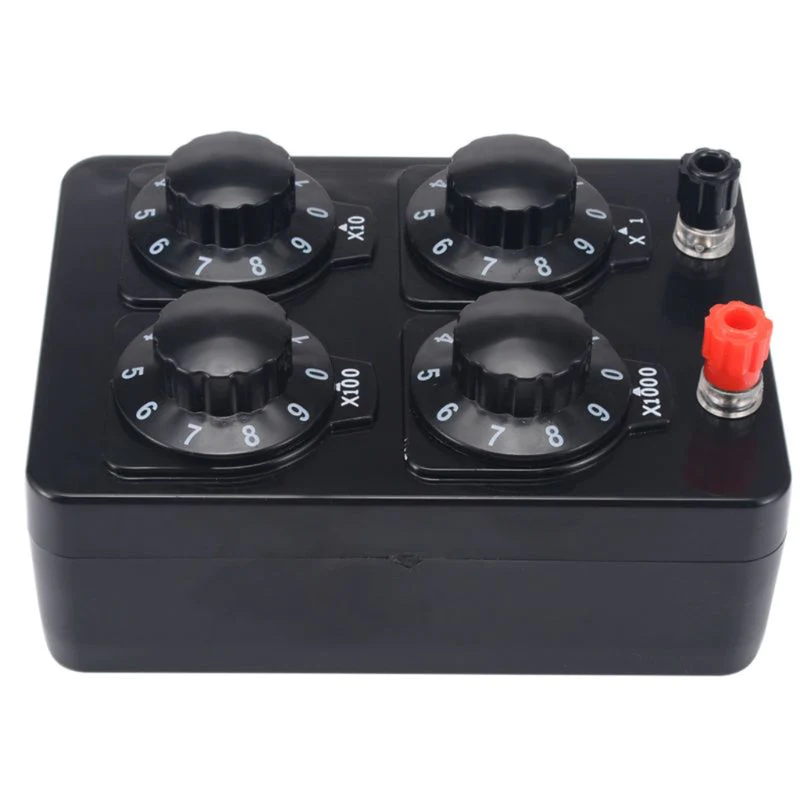Resistance Box (0-9999 Ohm)
This product is no longer available.
Internal Reference:
T-120
Resistance Box (0-9999 Ohm)
By using this resistance box, you can easily adjust the value of a resistor that you are uncertain about, and get a very accurate value for the resistance needed in your circuit. It is also a good learning technique for kids to learn about the value of a resistor and the role that it plays in a circuit.
This resistance box has two copper terminals for connecting the positive and negative terminal of the circuit. The knobs are used in combination to adjust the resistance of the potentiometer.
How to set it up:
The four knobs are used in combination to adjust the resistance of the resistance box. By adjusting the x1 knob, resistance value will change with increments of 1. By adjusting the x10 knob, the resistance value will change with increments of 10. By adjusting the x100 knob, the resistance value will change with increments of 100. By adjusting the x1000, the resistance value will change with increments of 1000.
- The range of Switch x1: 1 to 9 ohms
- The range of switch x10: 10 – 99 ohms
- The range of switch x100: 100 – 999ohms.
- The range of switch x1000: 1000 ohms and above.
To node:
The maximum current that this device can work with depends on the resistance value and the applied voltage. According to Ohm’s law, the current is equal to the voltage divided by the resistance. For example, if you set the resistance to 1000 ohm and apply 10 volts, the current will be 10/1000 = 0.01 amps. However, you should also consider the power rating of the device, which is the product of voltage and current. If the power rating is exceeded, the device may overheat or damage. To calculate the power rating, you can use this formula: P=V2/Rw here P is the power in watts, V is the voltage in volts, and R is the resistance in ohms. For example, if you set the resistance to 1000 ohm and apply 10 volts, the power will be 10^2/1000 = 0.1 watts. If the device has a power rating of 1 watt, then it can handle this setting. However, if you increase the voltage to 20 volts, the power will be 20^2/1000 = 0.4 watts, which is still within the limit. But if you increase the voltage to 30 volts, the power will be 30^2/1000 = 0.9 watts, which is close to the limit. And if you increase the voltage to 40 volts, the power will be 40^2/1000 = 1.6 watts, which exceeds the limit and may cause damage. Therefore, you should always check the power rating of the device and make sure that it is not exceeded by your settings.
Shell material: PlasticDimensions: 14x10x5cmColor: Black
